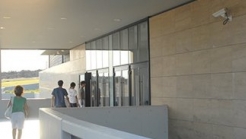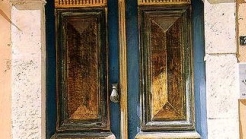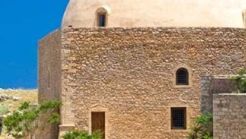

Greece
The National Museum of Modern Art began operating in 2000. This was a step to fill a big gap that existed for many years on international modern art for Athens.
The National Museum of Modern Art began operating in 2000. This was a step to fill a big gap that existed for many years on international modern art for Athens.
The museum immediately began with exhibitions of mostly critic and experimental nature, because the need had arisen. The museum does not have a permanent location, but by 2013, when the renovation of the ex- FIX factory will be completed in order to be the museum’s permanent location, there will be a decent collection of works of art of Greek and international artists, showcasing innovative tendencies and critic research of the artistic present, but also its historic depth, reaching the 2nd half of the 20th century.
The main objective of the cultural politics of the NMMA is to create and expand permanent exhibitions. The means for the acquisition of works of art to create those permanent exhibitions, are purchases, and especially offers of works of art.
Under the training politics of the NMMA, training programs for students and families, children’s workshops, tours and teacher’s seminars take place, in order to aid to the discovery and familiarization of people of all ages to the modern greek and international art.
Series of temporary exhibitions with an inquisitive eye are presented around the themes, concerns and searches of the modern international art, individual works under the Museum’s order, monographic recursions to the middle of the career of modern artists and historic recursions in the fields of painting, constructions, photography, video, new media and «experimental» architecture.


The Museum, Pellas is located in the southeast of the foothills of the hill palace, in the northeastern part of archeological site


The house Chronaki is an important monument of the city of Heraklion, which for years was forgotten by everyone and everything. Last many have attempted to deal with in order to show off this sleek architectural. Is the mansion known by two names: House Chronaki or otherwise Konaki Rasich Bey Asprak


The Fortezza (Fortezza) is the Venetian castle in Rethymno, which dominates the hill of Palaiokastrou, almost into the center of the old town. The Fortezza is visible from every corner of the city, while at the same time has panoramic views across the town of Rethymno and the west coast, hiding within the entire centuries.
1039 Ε 6061 01515 00